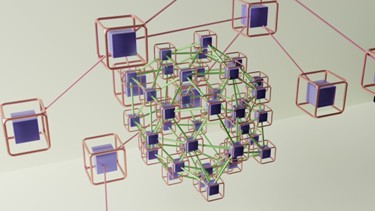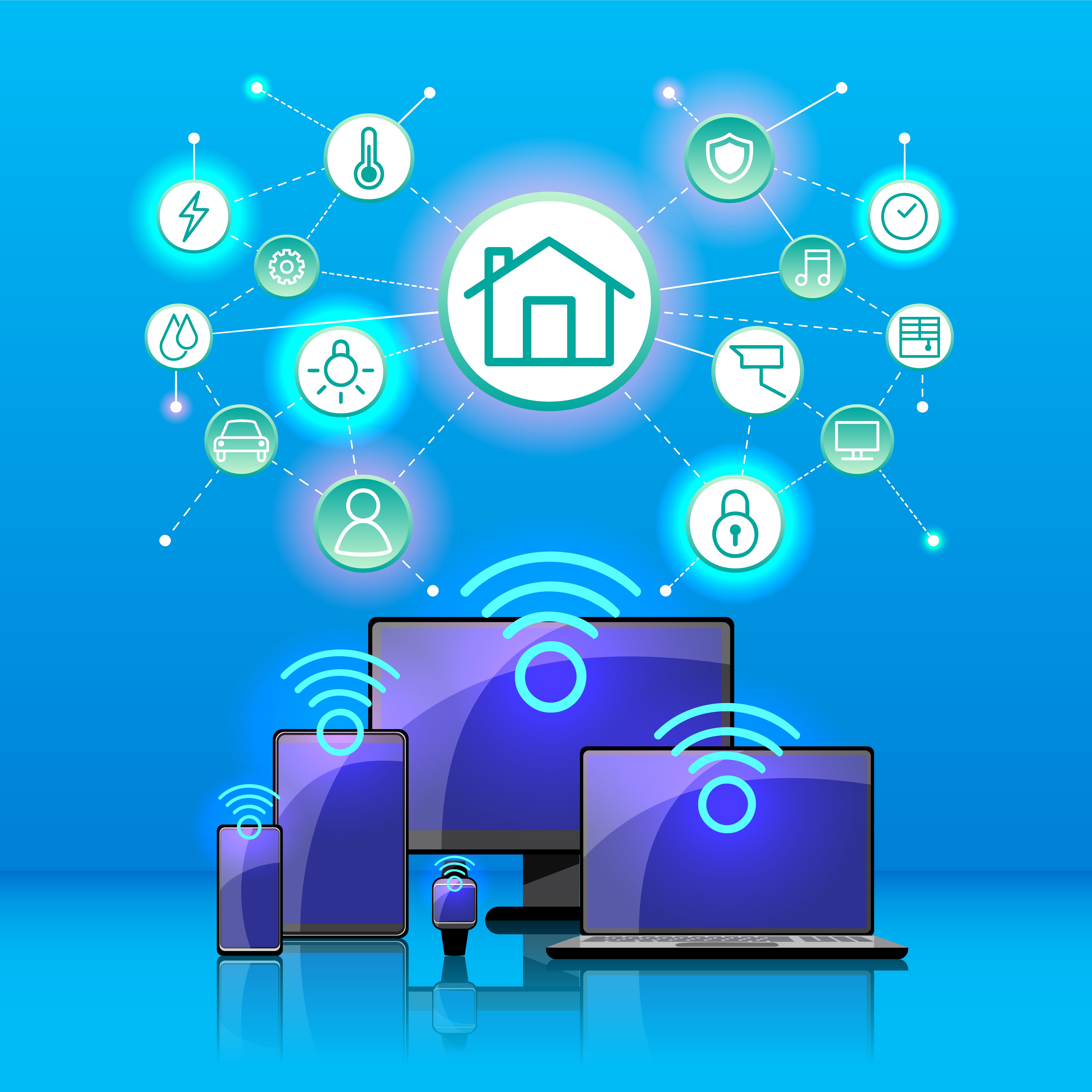IoT eSIM – How it Works, Functionality & Use Cases
-
January 8, 2024
-
8 min read

An IoT eSIM (Embedded Subscriber Identity Module) is an embedded chip that stores the data associated with a subscriber’s cellular service. It enables any connected device to access the internet without needing a physical SIM card.
With the help of an IoT eSIM, companies can easily provision, activate, and manage their fleets of connected devices from anywhere. The IoT has the potential to reshape industries and enhance our daily lives. With its sensor-driven capabilities and seamless connectivity, the IoT holds immense promise for a future of innovation and convenience.
In this article, we’ll dive into what exactly an IoT eSIM is, how it works, and explore how businesses can benefit from it.
IoT eSIM Overview
An IoT eSIM (Embedded Subscriber Identity Module) securely stores cellular service data in a chip embedded in a device. It allows connected devices to access the internet without a physical SIM card, offering a secure and flexible way to manage device lifecycle on cellular networks.
IoT eSIMs can be remotely programmed, activated, and managed in near real-time using eUICC, a secure application embedded inside the chip. This simplifies fleet management and deployment of connected devices, eliminating the need to install physical SIM cards manually.
How IoT eSIM Works
The IoT eSIM connects to the internet using a unique network profile. This profile includes information such as the cellular network provider, the type of connection (GSM or LTE), and various authentication parameters.
When a device powers on, it authenticates itself with the network provider using this data. Once it completes authentication, the device can access the internet over a cellular connection.
How does the Internet of Things Work?
IoT connects everyday objects to the internet, enabling them to collect and share data. Sensors and devices gather information.
This is then transmitted to a central system for analysis. It allows for remote monitoring, automation, and informed decision-making in various applications.
Key Technologies behind IoT
Several technologies come together to make IoT possible.
- Sensors and actuators: Sensors detect environmental changes like temperature, humidity, light, motion, or pressure. Actuators cause physical changes, such as opening valves or turning on motors. They are crucial in IoT, enabling machines and devices to interact with the physical world. Automation occurs when sensors and actuators resolve issues without human intervention.
- Connectivity technologies: IoT devices need internet connectivity to transmit data from sensors and actuators to the cloud. Various connectivity technologies are used in IoT, such as Wi-Fi, Bluetooth, cellular, Zigbee, and LoRaWAN.
- Cloud computing: The cloud is where IoT device data is stored, processed, and analyzed. Cloud computing platforms offer the infrastructure and tools for data storage, analysis, and the development of IoT applications.
- Big data analytics: Businesses require advanced analytics tools to understand the massive amounts of data IoT devices generate. These tools include machine learning algorithms, data visualization tools, and predictive analytics models. They help extract insights and identify patterns.
- Security and privacy technologies: IoT deployments are growing, making IoT security and privacy crucial. Technologies like encryption, access controls, and intrusion detection systems are employed to safeguard IoT devices and their generated data from cyber threats.
Role of SIM and eSIM in IoT
Traditional SIM cards have served us well, but we need something more versatile and future-proof in the rapidly evolving IoT landscape. That’s where eSIMs come in. eSIMs, with their remote programmability, outperform traditional SIM cards in multiple aspects.
| Feature | Traditional SIM | IoT eSIM |
| Installation | It needs Physical installation. | It will be pre-installed, so it does not need any physical insertion. |
| Programmability | It is not programmable. | It is remotely programmable. |
| Management | You can manage it manually on an individual basis. | You may manage it in bulk and on a remote basis. |
| Flexibility | Its flexibility has limited scope and depends upon network providers. | It has high flexibility and it can switch providers remotely. |
Functionality of IoT eSIM
IoT eSIMs offer functionalities that make them ideal for IoT implementations. They’re the game-changers we’ve been waiting for in the IoT landscape. Let’s take a peek at their salient features:
- It offers remote provisioning.
- With IoT solutions, businesses can get better security.
- It provides a better way to secure the data transmission over cellular networks.
- This reduces the cost of hardware, too.
- It has high scalability and is suitable for large-scale IoT deployments.
Use Cases of IoT eSIM.
1. Industrial Asset Monitoring
With eSIM, industries can seamlessly track and monitor their assets, even in remote locations. This gives them real-time insights, significantly enhancing operational efficiency.
2. Smart Metering
Utilities can leverage eSIM to measure energy consumption and automate billing accurately. This enhances customer experience and reduces administrative costs.
3. Smart Grid Management
Using eSIM, utilities can monitor and manage the grid in real-time. This allows for better resource planning, reduced operating costs, and improved service quality.
4. Vehicle Telemetrics
With eSIM, fleet operators can track their vehicles in real-time to monitor driver behaviour and maintenance schedules. This enables predictive maintenance and improved safety.
5. Smart supply chain management
IoT sensors are revolutionizing how goods are tracked and managed. Real-time monitoring of shipments allows for greater visibility, reduces theft, minimizes spoilage, and optimizes routes. Did you know? Amazon, the e-commerce giant, uses several IoT-enabled robots to manage warehouse operations by scanning the QR code on packages.
6. Precision agriculture
Field sensors collect data on soil moisture, temperature, and crop health. This information helps farmers make data-driven decisions, conserve resources, increase yields, and enhance sustainability.
7. Healthcare transformation
Hospitals can monitor patients remotely and give personalized treatment plans with IoT devices. Smart medical wearables can track vital signals and alert medical professionals to potential issues early on. This reduces hospital readmissions and improves patient outcomes.
8. Energy optimization
IoT-enabled smart grids monitor and manage energy distribution more efficiently. This reduces energy wastage, lower utility operational costs, and a smaller carbon footprint.
9. Smart Home Automation
IoT has made our homes smarter and more comfortable. IoT is making our homes more convenient and energy-efficient, from smart thermostats that learn your heating and cooling preferences to control the home’s temperature to smart lights that switch off automatically when you leave the room.
10. Wearable Technology
Wearable IoT devices have taken personal health monitoring to a new level. Wearables are making our lives easier and healthier, from fitness trackers that monitor steps and heart rates to smartwatches that allow you to make calls and receive messages.
Advantages of the IOT eSIM
Some of the important advantages of IoT for businesses include:
1. Improves the Customer Experience
IoT allows businesses to tailor their services to the specific needs of their customers. Real-time consumer data can be analyzed to understand their preferences and behaviours better, enhancing customer satisfaction and loyalty.
2. Generates More Revenues
With IoT, businesses can create new business models and services, thus opening new revenue streams. For example, companies can leverage the predictive analysis of IoT to introduce usage-based pricing models, leading to increased profitability.
3. Enables Businesses to Make Informed Decisions
Data is the lifeblood of any business, and IoT provides a wealth of it. Companies can analyze this data to gain valuable insights, which can inform decision-making processes and help businesses develop effective strategies.
4. Provides Adaptable Business Models
IoT provides flexibility in business operations. It allows businesses to quickly adapt to changing market conditions, customer preferences, and technological advancements. This adaptability is crucial in maintaining a competitive edge in today’s ever-evolving business landscape.
5. Improves Productivity of Employees
IoT can significantly enhance employee productivity. Smart devices can automate routine tasks, leaving employees free to focus on more complex and creative tasks. This can lead to a more engaged workforce and increased overall productivity.
6. Saves Time and Money
IoT can save significant costs by improving resource utilization and reducing waste. Automated systems powered by IoT can perform tasks faster and more accurately than humans, saving time and money.
7. Controls Business Processes
IoT allows businesses to control their business processes completely. Real-time monitoring of operations can help identify bottlenecks and inefficiencies, which can be addressed to improve overall process effectiveness.
8. IoT Fuels Digital Transformation
According to a 2021 IoT Enterprise Survey by Omdia, 90% of enterprises agree that IoT is core to their digital transformation plans. It offers a vast network of connected devices and sensors that collect data, transforming business from reactive to proactive.
As a result of IoT deployment, companies are seeing improved efficiency and productivity gains. IoT’s ability to bridge the physical and digital worlds unlocks new revenue streams, expands market reach, and elevates customer experiences.
Further, Oracle stated that IoT projects are linked to broader digital transformation projects tied to strategic organizational goals. However, the actual IoT projects can be complex and time-consuming. These paths toward digital transformation require organizations to initially obtain their data, perform analysis, and incorporate it into their processes to derive actual business value.
Simplify IoT Connectivity with Airtel
In the continuously evolving IoT landscape, eSIM is truly a revolution. Whether it’s real-time asset monitoring, smart metering, grid management, or vehicle telemetrics, eSIM makes it more efficient and secure. To stay ahead in the IoT game, switch to Airtel.
Airtel’s IoT SIM Connection Solution provides an array of connectivity technologies. These are specially tailored to meet the distinctive requirements of your business. It provides Telco-grade security with a dedicated private network.
Airtel IoT is a flexible IoT platform that has easy-to-use APIs. These allow for seamless integration into business applications. Get connected with Airtel’s IoT SIM now and unlock a world of possibilities!!
 Share
Share








